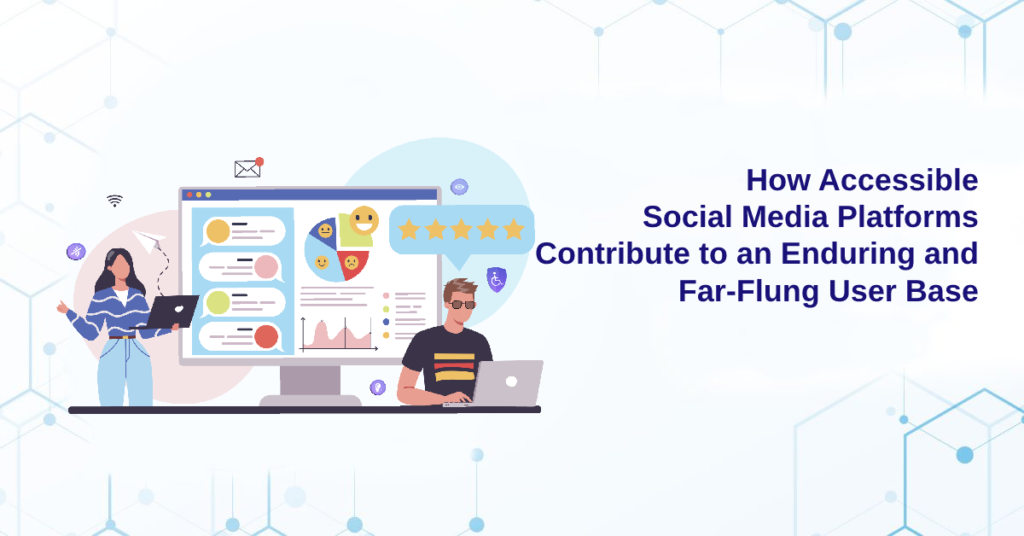
Social Media is analogous to the internet for many. As accurate as it is to refer to the internet as a perpetual pit for knowledge, it is often consumed in the form of social media apps installed on our smartphones.
Introduced as a mere medium to connect with friends and family, with the boon to present one’s unfiltered self, social media has birthed new age career opportunities like social media influencers that have touched young and old alike.
Given the global reach, which includes creators and users, accessibility is of grave importance. Marketers can’t pass over one billion disabled audiences who are consumers of your content. Besides, it helps in more ways than one that we will learn about in this blog.
Unfolding Social Media Engagement
Social Media Engagement needs to be quick and skim over glimpse to a glance. Learning to craft social content in the most precise and concise manner with the help of WCAG’s writing recommendations, like avoiding jargon and acronyms, ascertains inclusivity for people with cognitive disabilities. Using accessible language strengthens your brand’s image and mushrooms your audience.
We come across a lot of disabled people sharing their inspirational stories all across social media. It is only made possible when accessibility is kept in mind from the early designing phase to integrate accessible features while also evolving as mindful creators and consumers to make sure the content we share is accessible by running the basic yet mandatory checks.
Tweaking the Anatomy
Social Media Platforms are doing their bit by adding tools and features that make it simpler to generate accessible content.
Roughly all the social media platforms are unified with innate accessible tools and features, as a marketer one simply needs to learn how to put them to best use.
Here are some pointers:
- Using plain and compact language. Avoid using complex jargon, acronym, or any unusual terms.
- Providing text alternatives for images.
- Providing captions, subtitles, and transcripts for multimedia content.
- Providing relevant link text.
- Using an accessible color palette. For example, Color Contrast Checker by Pivotal Accessibility helps you choose the right color palette for your website.
- Using an organized page structure to provide an uninterrupted flow.
In a nutshell, mastering the art of writing succinctly and learning the correct usage of emojis, hashtags, and fonts alongside captioning, subtitling, and writing transcripts safeguards both image and video accessibility.
Social media is a powerful tool for building campaigns and prioritizing inclusivity in all your digital content benefits everyone.
Accessibility is a Win-Win for all
No matter how modern we get in our outlook, we need human touch to win our hearts. The same is true with social media. An image with accurate alternative text, transcripts, and captions for multimedia content ensures that both the website and mobile application meet WCAG’s Level AA guidelines and guarantee better visibility regardless of diversified disabilities.
While we all agree that social media is an excellent choice to market our products, and services or be our life, accessibility barriers can impact your user base and disrepute your brand.
We, at Pivotal Accessibility, take pride in our range of services and are enthusiastic about keeping up with the times.
